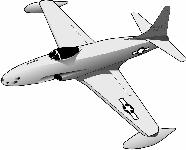
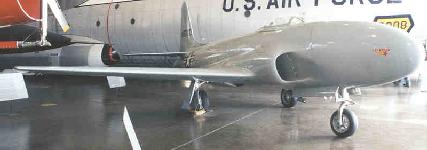
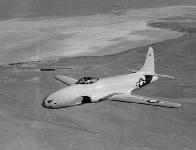
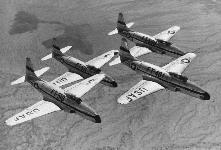
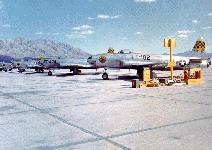
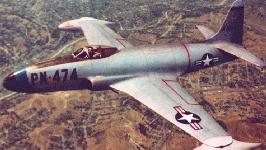
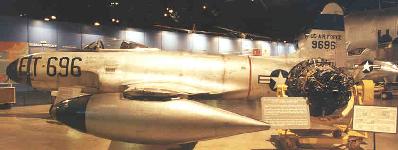





The Shooting Star was the first USAF aircraft to exceed 500 mph in level flight, the first American jet airplane to be manufactured in large quantities, and the first USAF jet to be used in combat. Designed in 1943, the XP-80 made its maiden flight on January 8, 1944. Several early P-80s were sent to Europe for demonstration, but World War II ended before the aircraft could be employed in combat. The aircraft was redesignated in 1948 when "P" for "Pursuit" was changed to "F" for "Fighter." Of 1,731 F-80s built, 798 were F-80Cs.
Although designated a high-altitude interceptor, the F-80C was used extensively as a fighter-bomber in the Korean Conflict, primarily for low-level rocket, bomb and napalm attacks against ground targets. With the beginning of hostilities in June 1950, Warner Robins Air Logistics Center (WR-ALC) modernized F-80s assigned to federalized Air National Guard units in a crash program called "Project Hold-Off." On November 8, 1950, an F-80C flown by Lt. Russell J. Brown, flying with the 16th Fighter Interceptor Squadron, shot down a Russian-built MIG-15 in the world's first all-jet fighter air battle.
Specifications | |
| Wing Span | 38 feet, 10 inches |
| Length | 34 feet, 6 inches |
| Height | 11 feet, 4 inches |
| Weight | 16,865 lbs. |
| Armament | Six .50 caliber machine guns and eight 5 inch rockets or 2,000 lbs. of bombs |
| Engine | Allison J33, with 5,400 lbs. of thrust (with water-alcohol injection) |
| Cost | $93,456 |
| Maximum speed | 580 mph |
| Cruising speed | 437 mph |
| Range | 1,090 miles |
| Service Ceiling | 46,800 feet |







